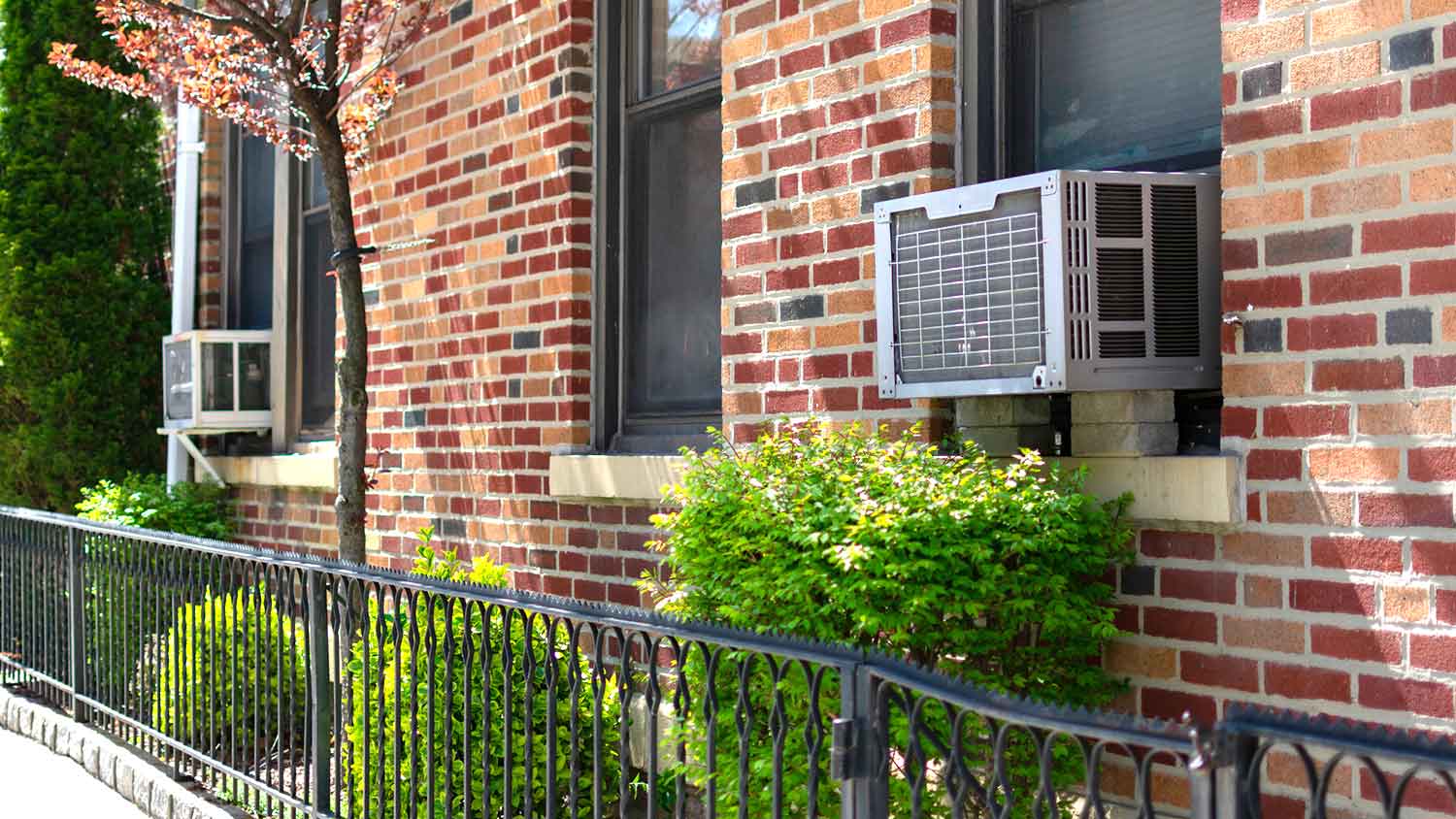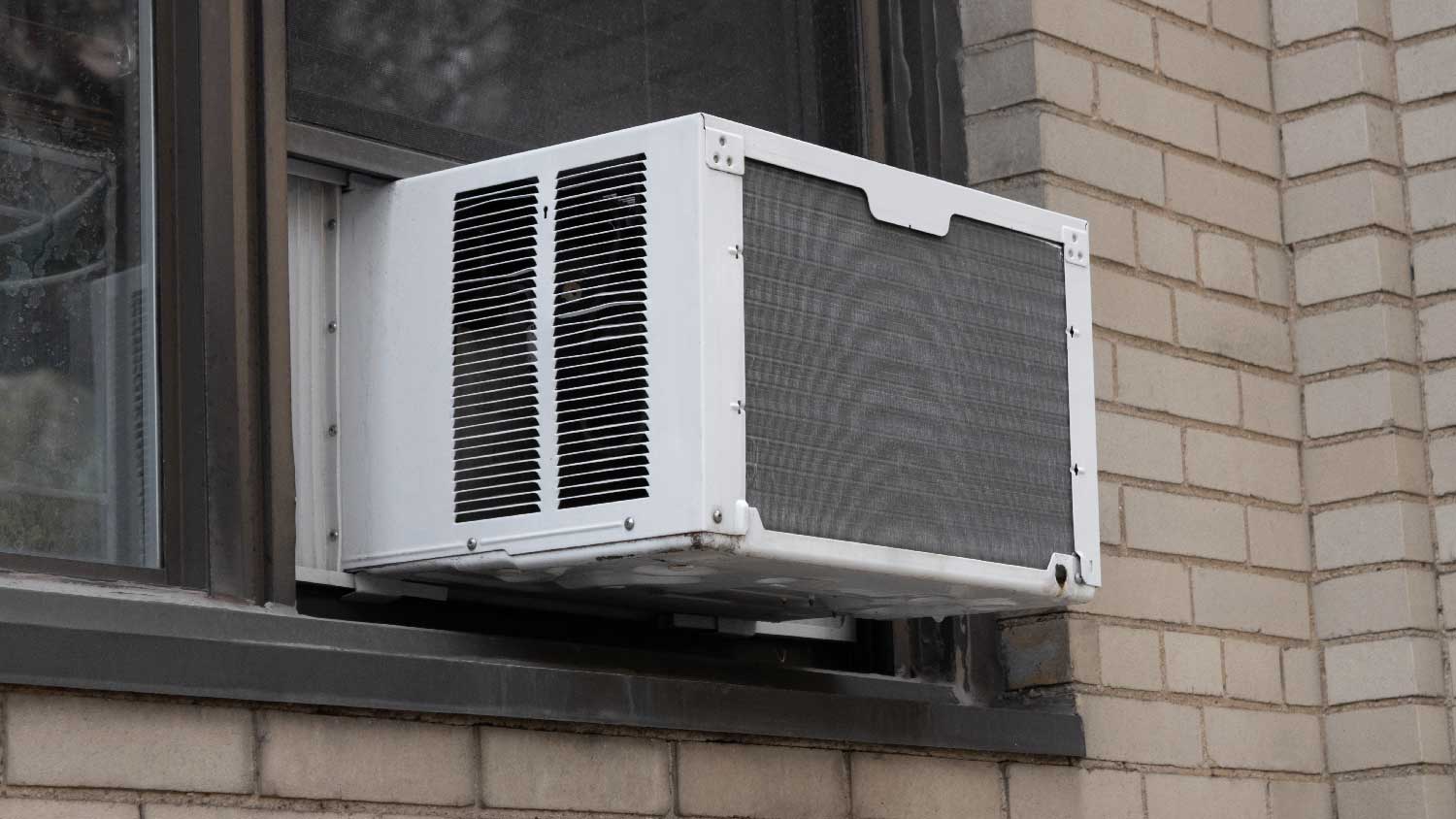
Discover how much an electric furnace costs based on factors such as unit size, local labor rates, electrical upgrades, and ductwork condition.
The average cost to install a mini split AC system is $3,000


Installing a mini split AC system costs between $700 and $14,500, with an average price of $3,000.
Factors like required BTUs, number of zones, SEER rating, labor, and brand influence the total cost.
Investing in a mini split AC provides energy-efficient cooling and customizable zoning and can increase your home's value.
Proper budgeting and hiring an HVAC professional ensure your system performs correctly and lasts longer.
Wall-mounted units are the most budget-friendly option, and adding extra features can enhance efficiency.
This article was updated using automation technology and thoroughly reviewed for accuracy by HomeAdvisor Editor Ryan Noonan.
You can expect to pay between $700 and $14,500 for mini split AC installation, with most homeowners spending $3,000. Factors like the required BTUs, number of zones, SEER rating, labor, and brand will influence the total cost. Installing a mini split AC system is a smart way to provide efficient and customizable cooling for your home. Proper budgeting and hiring a professional HVAC contractor are essential to ensure your system performs optimally and lasts for years to come. By understanding what affects installation costs, you can make informed decisions and get the best value for your investment.
Several factors influence the total cost of a split AC installation, including capacity, brand, and labor.
Mini-split systems cost between $450 and $8,000, depending on their size and your home's layout. The size is measured in British thermal units (BTUs), which indicate how much cooling power the system has. You'll need between 20 and 60 BTUs per square foot of your home. For a 1,000-square-foot home, you'd need at least 20,000 BTUs for efficient cooling.
Before installation, your local HVAC contractor assesses your home and conducts a load analysis to determine cooling demand and required split AC capacity. Square footage provides a baseline estimate for BTUs, but your home’s layout, number of levels, windows, doors, insulation, and other factors also play into the final cooling load.
| Unit Size (BTUs) | Average Cost Range |
|---|---|
| 6,000 | $450–$1,600 |
| 9,000 | $600–$2,300 |
| 12,000 | $700–$3,200 |
| 18,000 | $1,000–$4,000 |
| 24,000 | $1,100–$5,200 |
| 30,000 | $1,600–$5,700 |
| 36,000 | $1,800–$6,000 |
| 42,000 | $3,000–$8,000 |
SEER (Seasonal Energy Efficiency Ratio) ratings measure how efficiently an air conditioner operates during peak cooling season—the higher the rating, the more efficient the system. Depending on where you live, the minimum SEER rating is 14 or 15.
High SEER-rated split ACs often feature advanced technology like variable-speed compressors and smart controls, which enhance efficiency. While these units might cost more upfront, they can lower your energy bills over time. Plus, ductless systems avoid the energy losses common with traditional ductwork, saving you even more.
Prices vary between mini-split air conditioner brands. Some brands are affordable but lesser-known, while others have wide recognition, more features, and better warranty options, resulting in higher prices and total AC unit installation costs.
| Brand | Average Cost Range |
|---|---|
| Daikin | $900–$7,600 |
| Fujitsu | $1,100–$8,300 |
| LG | $900–$7,600 |
| Mitsubishi | $1,200–$7,800 |
| Panasonic | $1,200–$7,800 |
| Rheem | $1,100–$8,300 |
Labor costs for installing a split AC system range from $300 to $2,000 for a single-zone system and from $700 to $3,000 for multi-zone systems. The complexity of the installation impacts the total cost—for instance, installing a recessed ceiling unit takes more time than a floor-mounted one.
Most HVAC contractors charge between $50 and $100 per hour, and installations take anywhere from two to eight hours. The exact hourly rate can vary based on the contractor's experience, local demand, and other factors.
Where you place your indoor and outdoor units, as well as electrical and refrigerant lines, affects total costs. Installations that are harder to access, like mounting units on high walls or ceilings, may require more labor. Higher floors usually need more cooling than lower levels and may require more powerful units.
Check your local building codes—you may need permits for mini-split installations, which can cost between $250 and $400. If you require electrical work or structural changes, budget for additional costs.
Be aware of additional costs that can affect your budget, such as:
Electrical upgrades: If your home's electrical system is outdated, you might need some rewiring to handle the new AC's load.
Removal of the old system: If you're replacing an existing system, expect to pay $80 to $150 for removal unless it's included in your contractor's estimate.
Outdoor setup: Installing the outdoor condenser may require a concrete pad or mounting work, adding a few hundred dollars to your cost.
Maintenance: Regular annual maintenance, costing between $75 and $200, keeps your system running efficiently and can prevent expensive repairs.
Extra features: Adding smart thermostats or other advanced features increases upfront costs but enhances convenience and energy savings.
Mini-split ACs let you divide your home into separate cooling zones. Each indoor unit, or head, connects to one outdoor condenser and serves a specific zone with its own thermostat. This allows you to set different temperatures in different areas of your home, tailoring comfort to your preferences. Zoning also lets you control rooms that don't need as much cooling, like the garage or basement, enhancing overall energy efficiency.
A single-zone mini AC system ranges from $500 to $5,000. The total number of indoor heads and the BTU rating depend on your home’s assessed cooling load. Most homes operate with one outdoor unit and one or more indoor heads. Large homes may need additional outdoor units.
| Number of Zones | Average Cost Range |
|---|---|
| 1 | $500–$5,000 |
| 2 | $1,400–$7,700 |
| 3 | $1,800–$9,100 |
| 4 | $2,600–$10,700 |
| 5 | $4,400–$12,000 |
Mini-split AC system costs vary between handler types, which are mainly distinguished by their mounting design.
| Handler Type | Average Cost Range |
|---|---|
| Wall-mounted | $500–$9,200 |
| Floor-mounted | $1,300–$3,800 |
| Ceiling-mounted | $1,200–$12,000 |
| Ceiling cassette | $1,300–$9,100 |
Wall-mounted split ACs average $500 to $9,200 each. Generally installed near the ceiling for optimal airflow, wall-mounted units are the most common and budget-friendly air handler type. They’re relatively simple for HVAC technicians to install and offer efficient cooling for most homes.
Floor-mounted units are installed on or near the floor, ranging from $1,300 to $3,800 per head. These units have versatile applications, adapting to spaces with sloped ceilings, tall windows, or otherwise limited wall or ceiling space.
Ceiling-mounted units cost an average of $1,200 to $12,000 per head. Similar in design and appearance to wall-mounted units, ceiling-mounted handlers attach to the ceiling for a more discreet appearance and efficient airflow.
Ceiling cassettes range from $1,300 to $9,100 each. Recessed into the ceiling, these discreet units resemble built-in ductwork. Installing these units flush with the ceiling is more involved and costly than other options.
Installing a mini-split AC system can boost your home's value, especially if it doesn't already have air conditioning. These systems are highly energy-efficient—some offer SEER ratings up to 42, compared to central ACs that max out around 26. In hot climates, this efficiency translates to significant cost savings on energy bills. Many mini-splits also function as heat pumps, cooling and heating in one system. Additional benefits include:
Customized zoning: Set different temperatures for different areas of your home.
Easy maintenance: Simpler upkeep compared to traditional HVAC systems.
Quiet operation: Enjoy a comfortable environment without the noise of standard AC units.
To make the most of your investment, consider these budgeting tips:
Get multiple quotes: Comparing prices and services from different HVAC contractors helps you find the best deal.
Look for rebates: Check for rebates or incentives on energy-efficient systems to save on upfront costs.
Choose high SEER ratings: Investing in a higher SEER-rated system can reduce your energy bills over time.
Schedule wisely: Planning your installation during the off-season might lower labor costs.
Size it right: Ensure your system is correctly sized for your home to avoid inefficiency and unnecessary expenses.
No place is more important than your home, which is why HomeAdvisor connects homeowners with local pros to transform their houses into homes they love. To help homeowners prepare for their next project, HomeAdvisor provides readers with accurate cost data and follows strict editorial guidelines. After a project is complete, we survey real customers about the costs to develop the pricing data you see, so you can make the best decisions for you and your home. We pair this data with research from reputable sources, including the U.S. Bureau of Labor Statistics, academic journals, market studies, and interviews with industry experts—all to ensure our prices reflect real-world projects.
From average costs to expert advice, get all the answers you need to get your job done.

Discover how much an electric furnace costs based on factors such as unit size, local labor rates, electrical upgrades, and ductwork condition.

Discover how much HVAC repairs cost based on the extent of damage, components that require replacement, and labor rates.

Need fascia and soffit repairs? Hiring a pro ensures proper installation, protects against pests, and prevents structural damage. Learn about common warning signs, material options, and how fascia and soffits safeguard your home from moisture.

Budget for gas furnace costs based on factors such as size, climate, energy efficiency, furnace type, fuel source, labor, and more.

Who installs window AC units? Learn why HVAC technicians are the pros to call, when handypeople fit, and how pros complete safe installations

Wondering who fixes window AC units? Learn whether to call an AC repair company or an appliance repair pro, plus how repairs get done.